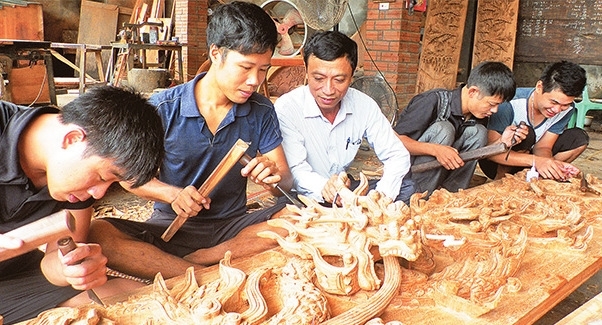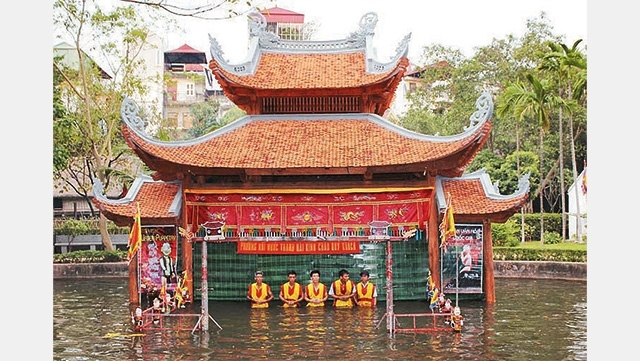 |
|
Carpenters in Chang Son village carving wood with engraver tool
|
Born into a family with a rich tradition of carpentry, Khiem - director of Phuc Loc Wooden House Company - said it is difficult to answer when he started practicing the craft and learnt to use woodworking tools; it just came naturally to him since he was a little boy.
After graduating from the Architecture Faculty of the Phuong Dong University, Khiem studied for a Masters at the Hanoi Architectural University and did his thesis on ‘Preserving Wooden-made Housing in Cu Da village’.
With his passion for traditional architecture and knowledge obtained at schools, Khiem decided to start his career on constructing traditional wooden houses.
Since there are many things to deal when building such type of houses, from structures, carving, and fengshui, these constructions are often assigned to skilful and experienced carpenters who have profound understanding on traditional culture.
The traditional wooden houses not only conform Vietnamese people’s behaviours towards nature and society but also denote their philosophy of life.
Life changes, making people tend to run for modern trends; however, they have finally found themselves trace back to their original values.
Therefore, when Khiem established his Phuc Loc Wooden House Company in 2007, he still had to umbrella his father’s prestige in receiving his first orders.
His efforts have been rewarded as his company has gradually gained acknowledgement.
 |
|
The ‘Thuy dinh’ (theatre for water puppetry shows) at the Museum of Ethnology by architect Nguyen Huy Khiem
|
In 2014, Khiem’s company received an order to construct a ‘thuy dinh’ - water pavilion, which is a theatre for water puppetry at the Vietnam Museum of Ethnology in Cau Giay district, Hanoi.
The theatre occupies the middle of a pond, with the puppeteers stand waist-deep in the water behind a bamboo curtain.
The director of the museum said he placed such absolute trust in a young architect like Khiem that he overcame normal prejudice to assign the construction to Khiem.
Khiem said he had to spend up to one year to complete the design for the water pavilion. As ‘thuy dinh’ often provides a spiritual space in the villages, when working on the design for the ‘thuy dinh’ at the museum – an entertaining place for the public, Khiem didn’t bring all the typical spiritual patterns of a typical ‘thuy dinh in his work. He replaced them with ‘long vi’ leaves instead, which is a signature decorative motif of Chang Son carpentry craft.
Khiem also adjusted the structure of the pavilion to create more space for the performers. Therefore, his ‘thuy dinh’ design for water puppetry has been established as an example for other designers to follow.
In today’s ever changing life, many people have eyed the construction of tradition houses as a way to help their descendants remember ancestors.
Thanks for Nguyen Van Khiem and carpenters in Chang Son village as well as other young architects who have shared a common passion for traditional values, Vietnamese traditional architecture has been preserved and further promoted.
Nhan Dan
 As a villager in Chang Son, which is famous for carpentry craft, Nguyen Huy Khiem has worked to uphold the time-honoured value of Vietnamese traditional architecture in modern life.
As a villager in Chang Son, which is famous for carpentry craft, Nguyen Huy Khiem has worked to uphold the time-honoured value of Vietnamese traditional architecture in modern life.